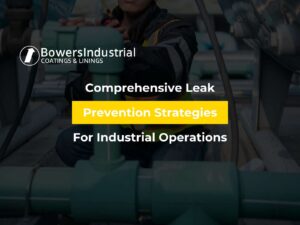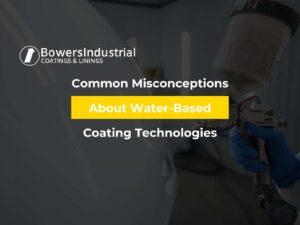When it comes to shielding steel surfaces from the damaging impact of chemicals and corrosion, the choice of coatings becomes pivotal. Chemical resistant paint for steel emerges as a potent solution that can significantly extend the lifespan of steel structures and equipment across various industries. In this article, we will explore what it is and why it’s crucial for steel and how to use it effectively.
Understanding Chemical Resistant Paint
Chemical resistant paint or coating is specifically formulated to withstand exposure to corrosive chemicals, acids, solvents and other harsh substances. These coatings create a barrier between the steel substrate and the corrosive elements, preventing damage and ensuring the longevity of the steel.
Why is Chemical Resistant Paint Important for Steel?
Steel is a widely used material in industries such as manufacturing, chemical processing and infrastructure. However steel is vulnerable to corrosion when exposed to chemicals or moisture. Corrosion can weaken steel structures, compromise their integrity and result in costly repairs or replacements.
Here are some key reasons why chemical resistant paint is essential for steel:
- Corrosion Prevention: It acts as a protective shield, preventing corrosive substances from coming into proximity to the steel surface. Without this protection, steel structures can suffer from rust, pitting, and degradation.
- Longevity: By shielding steel from corrosion, it helps extend the lifespan of steel structures, reducing maintenance and replacement costs. The investment in quality coatings pays off over time by avoiding the need for premature replacements.
- Safety: In industries where the integrity of steel equipment is crucial for safety such as chemical processing and oil refineries, using a chemical resistant coating can prevent accidents and hazards caused by equipment failure. This ensures a safer working environment for employees.
- Cost-Efficiency: Investing in it can save you money in the long run by reducing the need for frequent repairs and replacements. The cost of coating application is a fraction of the expenses incurred in repairing or replacing corroded/rusty steel.
How to Use Chemical Resistant Paint for Steel?
Using chemical resistant paint for steel effectively involves several steps to ensure proper application and maximum protection:
- Surface Preparation: Before applying the paint, the steel surface must be thoroughly cleaned and prepared. Remove any rust, dirt, oil or contaminants from the surface using abrasive methods like sandblasting or chemical cleaning. Proper surface preparation is the foundation for a successful coating application.
- Primer Application: Apply a suitable primer designed for use with a chemical resistant coating. The primer helps promote bonding between the steel and the paint. Proper adhesion ensures the coating’s durability and effectiveness.
- Mixing: Follow the manufacturer’s instructions for mixing. It’s essential to achieve the correct consistency for optimal performance. Using the wrong mixing ratios can lead to low-quality outcomes so attention to specifics is important.
- Application: Use a high-quality brush, roller, or spray equipment to apply the paint evenly to the prepared steel surface. Ensure that the coating is applied in a uniform thickness following the manufacturer’s recommendations for the specified dry film thickness.
- Drying and Curing: Allow the paint to dry and cure according to the manufacturer’s recommended drying times and environmental conditions. Curing is important to achieving the full chemical resistance properties of the coating. Rushing this step can compromise the coating’s effectiveness.
- Inspection: After the paint has fully cured, inspect the coated surface for any imperfections or areas that may need touch-ups. Thorough inspection ensures that the coating is applied uniformly, leaving no vulnerable spots for corrosion.
- Maintenance: Regularly inspect the coated steel surface for signs of wear or damage. Touch up any areas that show signs of wear to maintain the protective barrier. Maintenance is an ongoing process that helps preserve the coating’s integrity over time.
Choosing the Right Paint
Selecting the appropriate chemical resistant paint for your steel application is crucial. Factors to consider include:
- Chemical Exposure: Identify the specific chemicals or substances the steel will be exposed to. Different coatings are designed to resist different types of chemicals, so knowing the chemical environment is essential for selecting the right coating.
- Temperature and Environment: Consider the operating temperature and environmental conditions of the steel structure. Some coatings are better suited for extreme temperatures or outdoor exposure, while others excel in indoor environments.
- Substrate Condition: The condition of the steel substrate, including any existing corrosion, will influence the choice of coating and the need for surface preparation. Coatings designed for rusty surfaces can help rehabilitate corroded steel.
- Application Method: Ensure that the chosen paint is compatible with your preferred application method (brush, roller, spray, etc.). Different coatings may require specific application techniques for optimal results.
- Manufacturer’s Recommendations: Always follow the manufacturer’s guidelines and recommendations for the selected chemical resistant paint. Manufacturers provide detailed information on product suitability, application methods, and maintenance to ensure the coating’s effectiveness.
Conclusion
By following the steps outlined above and selecting the right coating for your specific needs, you can ensure that your steel remains protected against the corrosive forces of chemicals and the environment. Don’t forget to regularly inspect and maintain the coating to maximize its effectiveness and extend the life of your steel assets. Properly applied chemical resistant paint is your first line of defense against corrosion and chemical damage, making it an essential component in the maintenance and protection of steel surfaces.





